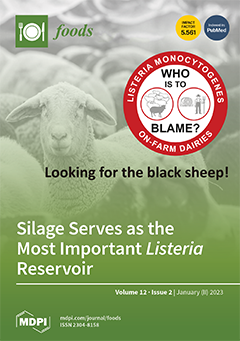The United States Department of Agriculture Food Safety and Inspection Service (USDA FSIS) does not maintain a zero-tolerance policy for
Salmonella in poultry and poultry products, despite being a known food safety hazard throughout the poultry industry. In 2016, USDA FSIS established performance standards for a 52-week moving window with the maximum acceptable percent positive for comminuted turkey (325 g sample) at 13.5% (7 of 52 samples). Based upon FSIS verification sampling results from one 52-week moving window, the
Salmonella prevalence for each poultry establishment in category 1 (below limit), 2 (meeting limit), or 3 (exceeding limit) are published for public viewing. Moreover, many poultry producers continue to have post-intervention samples test positive. Therefore, the use of quantification would be more valuable to determine the efficacy of process control interventions, corrective actions, and final product Log CFU/g of
Salmonella to make rapid, within shift, food safety decisions. Therefore, the objectives of these studies are to develop, verify, and validate a rapid and reliable quantification method utilizing RT-PCR to enumerate
Salmonella in the poultry industry from flock to final product and to utilize the method in an application study. BAX
® System SalQuant
® is an application of the BAX
® System Real-Time PCR Assay for
Salmonella to enumerate low levels of
Salmonella with shortened enrichment times. Curve development encompassed inoculating poultry matrix samples at four levels with an ATCC strain of
Salmonella, with three biological replicates per inoculation level, and five technical replicates being run on the BAX
® System for various timepoints, gathering the data, and creating a linear-fit equation. A linear-fit equation was provided for each timepoint. The ideal timepoint, based on the statistical parameters surrounding the equation (R2 > 0.80, Log RMSE < 0.60, and enumerable range 0.00 to 4.00 Log CFU/mL (g)) that most accurately estimate
Salmonella compared to most probable number (MPN), was chosen to be utilized for further studies.
Full article






